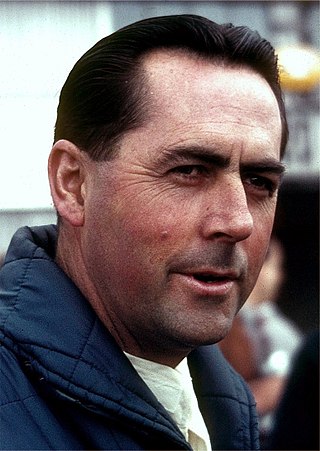Scuderia Ferrari S.p.A. is the racing division of luxury Italian auto manufacturer Ferrari and the racing team that competes in Formula One racing. The team is also known by the nickname "The Prancing Horse", in reference to their logo. It is the oldest surviving and most successful Formula One team, having competed in every world championship since the 1950 Formula One season. The team was founded by Enzo Ferrari, initially to race cars produced by Alfa Romeo. By 1947 Ferrari had begun building its own cars. Among its important achievements outside Formula One are winning the World Sportscar Championship, 24 Hours of Le Mans, 24 Hours of Spa, 24 Hours of Daytona, 12 Hours of Sebring, Bathurst 12 Hour, races for Grand tourer cars and racing on road courses of the Targa Florio, the Mille Miglia and the Carrera Panamericana. The team is also known for its passionate support base, known as the tifosi. The Italian Grand Prix at Monza is regarded as the team's home race.

Alberto Ascari was an Italian racing driver and a two time Formula One World Champion. He was a multitalented racer who competed in motorcycle racing before switching to cars. Ascari won consecutive world titles in 1952 and 1953 for Scuderia Ferrari. He was the team's first World Champion and the last Italian to date to win the title. This was sandwiched by an appearance in the 1952 Indianapolis 500. Ascari also won the Mille Miglia in 1954. Ascari was noted for careful precision and finely-judged accuracy.

Philip Toll Hill Jr. was an American racing driver. He was one of two American drivers to win the Formula One World Drivers' Championship, and the only one who was born in the United States. He also scored three wins at each of the 24 Hours of Le Mans and 12 Hours of Sebring sports car races.

Emilio Giuseppe Farina, also known as Giuseppe Antonio "Nino" Farina, was an Italian racing driver and the first official Formula One World Champion in 1950. He was the Italian Champion in 1937, 1938 and 1939.

Michele Alboreto was an Italian racing driver. He was runner up to Alain Prost in the 1985 Formula One World Championship, as well as winning the 1997 24 Hours of Le Mans and 2001 12 Hours of Sebring sports car races. Alboreto competed in Formula One from 1981 until 1994, racing for a number of teams, including five seasons (1984–88) for Ferrari.

The 1952 Italian Grand Prix was a Formula Two race held on 7 September 1952 at Monza. It was the eighth and final round of the 1952 World Championship of Drivers, in which each Grand Prix was run to Formula Two rules rather than the Formula One regulations normally used. The 80-lap race was won by Ferrari driver Alberto Ascari after he started from pole position. José Froilán González finished second for the Maserati team and Ascari's teammate Luigi Villoresi came in third.

The 1959 Portuguese Grand Prix was a Formula One motor race held at Monsanto on 23 August 1959. It was race 7 of 9 in the 1959 World Championship of Drivers and race 6 of 8 in the 1959 International Cup for Formula One Manufacturers. It was the eighth Portuguese Grand Prix and the second to be included in the World Championship of Drivers. It was the third time the race was held at Monsanto and the first for Formula One. The race was held over 62 laps of the five kilometre circuit for a total race distance of 337 kilometres.

The 1959 Italian Grand Prix was a Formula One motor race held at Monza on 13 September 1959. It was race 8 of 9 in the 1959 World Championship of Drivers and race 7 of 8 in the 1959 International Cup for Formula One Manufacturers. It was the 29th Italian Grand Prix and the 24th to be held at Monza. The race was held over 72 laps of the five-kilometre circuit for a total race distance of 414 kilometres.

The 1966 Italian Grand Prix was a Formula One motor race held at Monza on 4 September 1966. It was race 7 of 9 in both the 1966 World Championship of Drivers and the 1966 International Cup for Formula One Manufacturers. The race was the 36th Italian Grand Prix and the 32nd to be held at Monza. The race was held over 68 laps of the five kilometre circuit for a race distance of 391 kilometres.

The 1975 Italian Grand Prix was a Formula One motor race held at Monza on 7 September 1975. It was race 13 of 14 in both the 1975 World Championship of Drivers and the 1975 International Cup for Formula One Manufacturers. It was the 45th Italian Grand Prix and the 41st to be held at Monza. The race held over 52 laps of the five kilometre circuit for a race distance of 300 kilometres.

The 1979 Italian Grand Prix was a Formula One motor race held on 9 September 1979 at Monza. It was the thirteenth race of the 1979 World Championship of F1 Drivers and the 1979 International Cup for F1 Constructors.
The 1966 Formula One season was the 20th season of FIA Formula One motor racing. It featured the 1966 World Championship of Drivers and the 1966 International Cup for F1 Manufacturers which were contested concurrently over a nine-race series that commenced on 22 May and ended on 23 October. The season saw the "return to power" with the introduction of the '3 litre formula', doubling maximum engine capacity from 1.5 litres. Jack Brabham won the World Championship of Drivers and Brabham-Repco was awarded the International Cup for F1 Manufacturers.

The 1961 Formula One season was the 15th season of Formula One motor racing. It featured the 1961 World Championship of Drivers and the 1961 International Cup for F1 Manufacturers, which were contested concurrently from 14 May to 8 October over an eight race series. The season also included numerous non-championship races for Formula One cars.

The 1960 Formula One season was the 14th season of the FIA's Formula One motor racing. It featured the 11th FIA World Championship of Drivers, the third International Cup for F1 Manufacturers and numerous non-championship Formula One races. The World Championship commenced on 7 February and ended on 20 November after ten races.

Paul Richard "Richie" Ginther was a racecar driver from the United States. During a varied career, the 1965 Mexican Grand Prix saw Ginther take Honda's first Grand Prix victory, a victory which would also prove to be Ginther's only win in Formula One. Ginther competed in 54 World Championship Formula One Grand Prix races and numerous other non-Championship F1 events.

Giancarlo Baghetti was a Formula One driver who raced for the Ferrari, Automobili Turismo e Sport, BRM, Brabham and Lotus teams.

The Ferrari 246 F1 is a Ferrari racing car built for the Formula One World Championship of 1958.

The Cooper T51 was a Formula One and Formula Two racing car designed by Owen Maddock and built by the Cooper Car Company for the 1959 Formula One season. The T51 earned a significant place in motor racing history when Jack Brabham drove the car to become the first driver to win the World Championship of Drivers with an engine mounted behind them, in 1959. The T51 was raced in several configurations by various entrants until 1963 and in all no less than 38 drivers were entered to drive T51s in Grand Prix races.

The Ferrari 553 was a racing car produced by Ferrari which raced in 1953 as a Formula Two car and in 1954 as a Formula One car.
The Grand Prix racing history of Scuderia Ferrari dates back to 1947. The team is the most successful team in the history of Formula One racing, contesting every World Championship season since 1950, winning 15 Drivers' Championships and 16 Constructors' Championships.
















